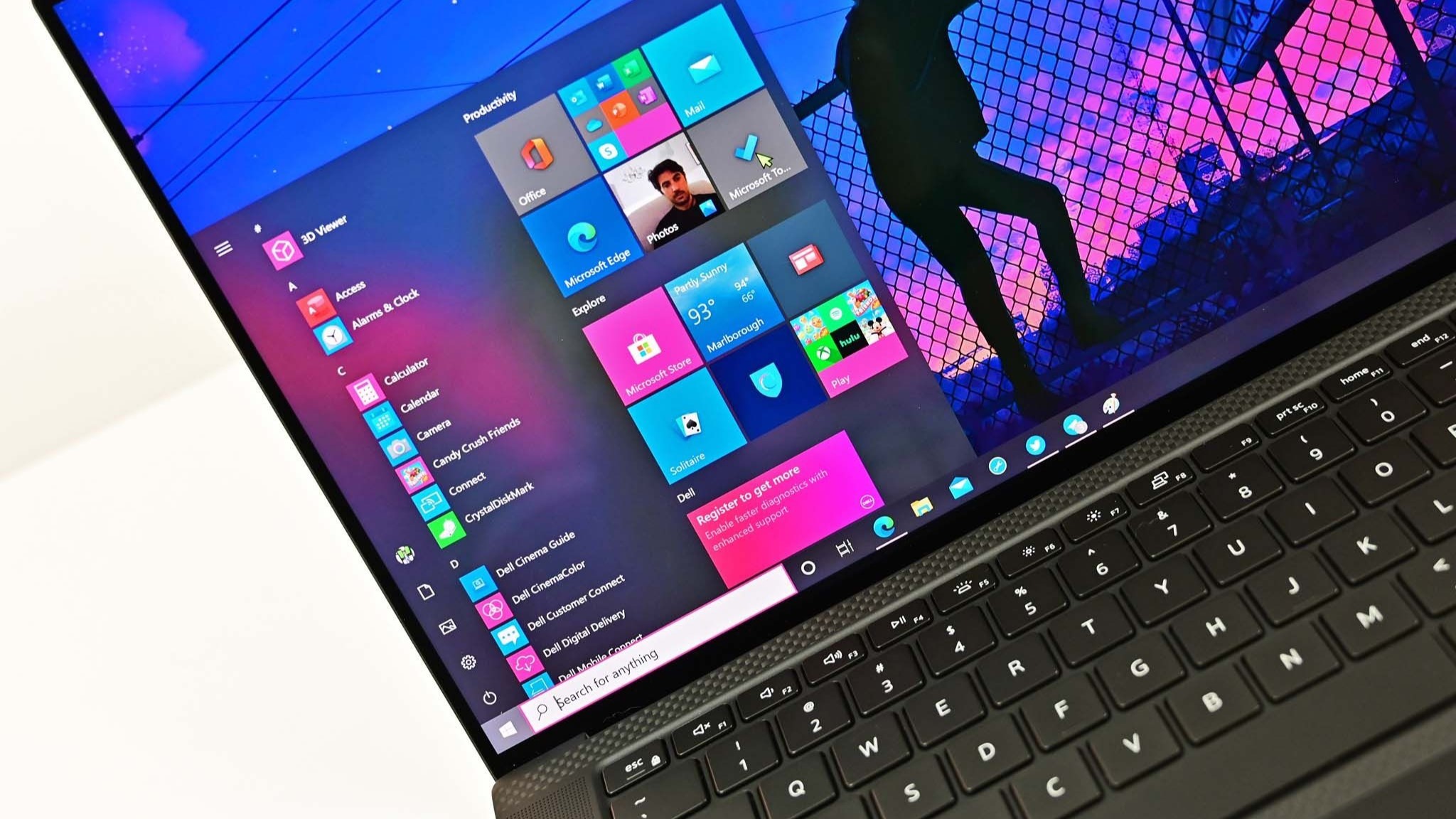Tunic did not have to work very hard to grab people's attention when it was initially shown off way back in 2018. Developed solely by Andrew Shouldice and published by Finji, Tunic showed off a stunning overworld being explored by an incredibly adorable little fox with a not-so-subtle resemblance to old-school Link from Legend of Zelda fame. The promotional material for Tunic, however, remained vague, showing little gameplay outside of some basic combat and general exploration.
Still, the taste of what the game had to offer was enough, and it continued to make short appearances on the E3 stage as its development progressed. Nearly four years after it was initially unveiled, the little isometric Zelda-like is finally ready for its big debut. Tunic is available March 16, 2022, as a console-launch exclusive on Xbox and is also available on PC. The big question now is, was it worth the wait?
Disclaimer: This review was made possible by a review code provided by Finji. The company did not see the contents of the review before publishing.
Tunic: What you'll like
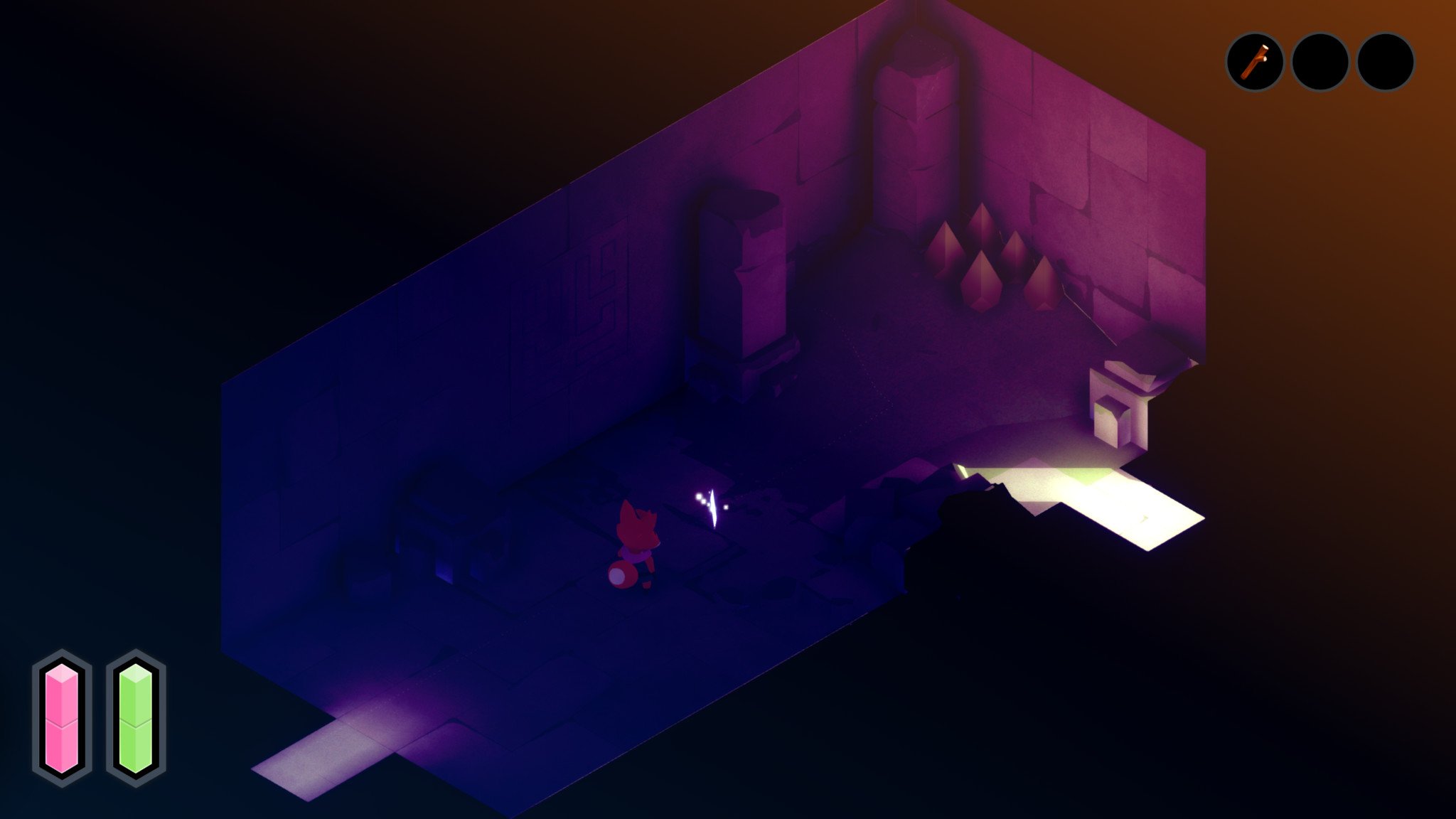
I played more than my fair share of Zelda titles as a child, so it was inevitable that the trailer featuring an adorable little fox protagonist wearing a green tunic and armed with a sword and shield was going to speak to me. The game's world was a bit cartoonish in style, but still somehow pulled off a polished aesthetic. The trailers and promotional materials were considerably light on gameplay details, however, often showing world exploration or minor combat scenarios but not much of Tunic's substance.
| Category | Tunic |
|---|---|
| Title | Tunic |
| Developer | Andrew Shouldice |
| Publisher | Finji |
| Genre | Puzzle-adventure |
| Minimum requirements | Windows 10, Intel Core i5 quad-core CPU, 8GB RAM, NVIDIA GTX 660/AMD RX 460 |
| Game size | 2GB |
| Play time | 12-20 hours |
| Players | Single |
| Launch price | $30 |
As it turns out, what Andrew Shouldice was hiding in those trailers was all of the secrets and puzzles that Tunic has to offer. Tunic — which originally was titled Secret Legends — is a constant barrage of locked doors, collectibles in seemingly unreachable areas, and mysteriously broken landmarks covered in a runic language. It can seem a bit daunting at first, as any guidance for solving these puzzles comes strictly from the pages of an instruction manual that you must find the pages of littering the world.
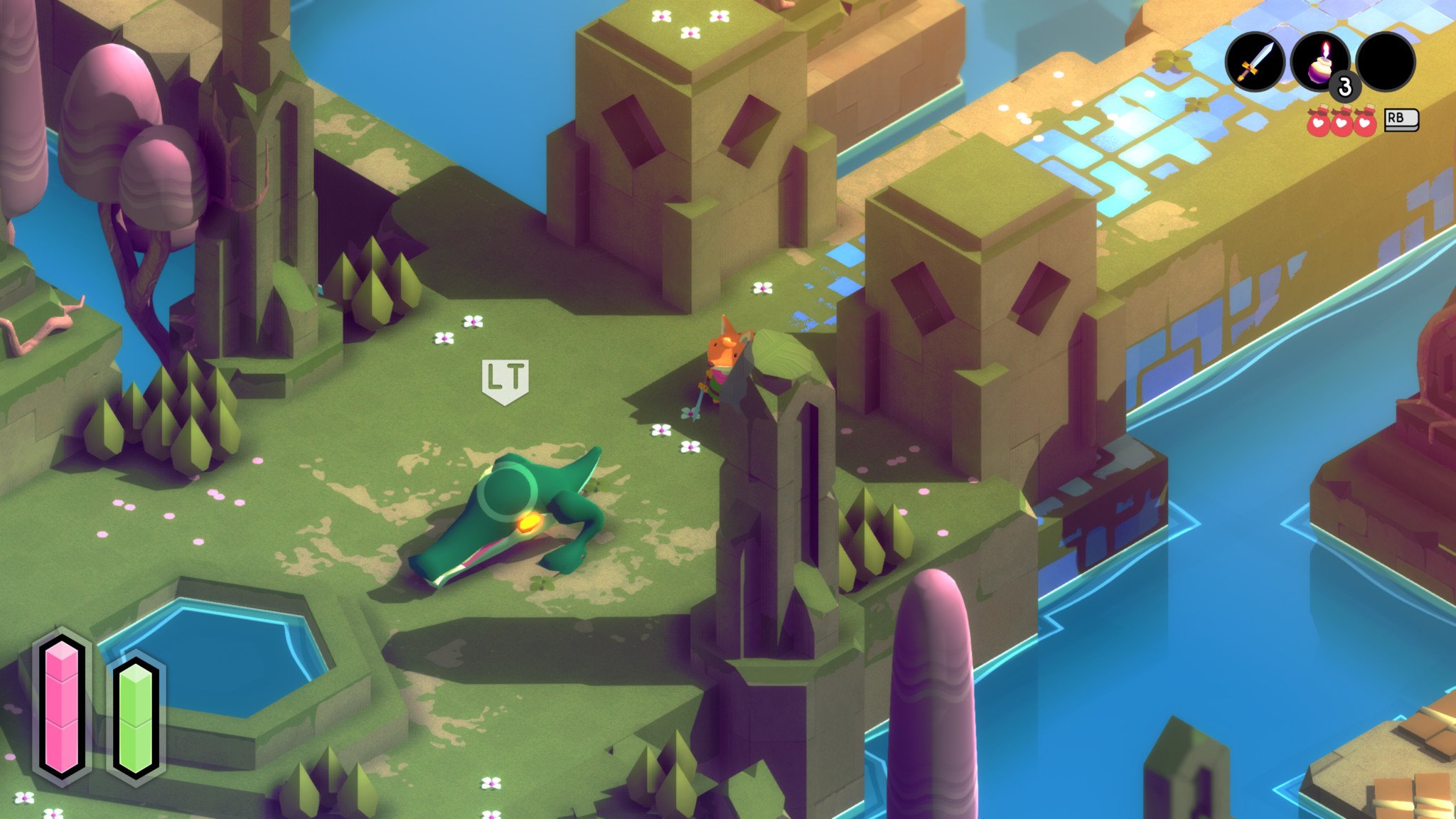
Occasionally, players will adventure themselves right into combat scenarios. There are a couple of different weapons scattered about for players to find. A stick is plenty suitable as a starter, but you'll definitely want to scope out the sword as quickly as possible. It is dangerous to go alone, after all.
Combat is simple enough, with players able to lock onto an enemy and attack, as well as perform an almighty dodge roll that can afford a few invincibility frames in a pinch. These small-scale run-ins with baddies are a good time to farm gold while also practicing the attack and dodge mechanic that is vital for surviving the boss battles lurking in the various dungeons.
All the latest news, reviews, and guides for Windows and Xbox diehards.
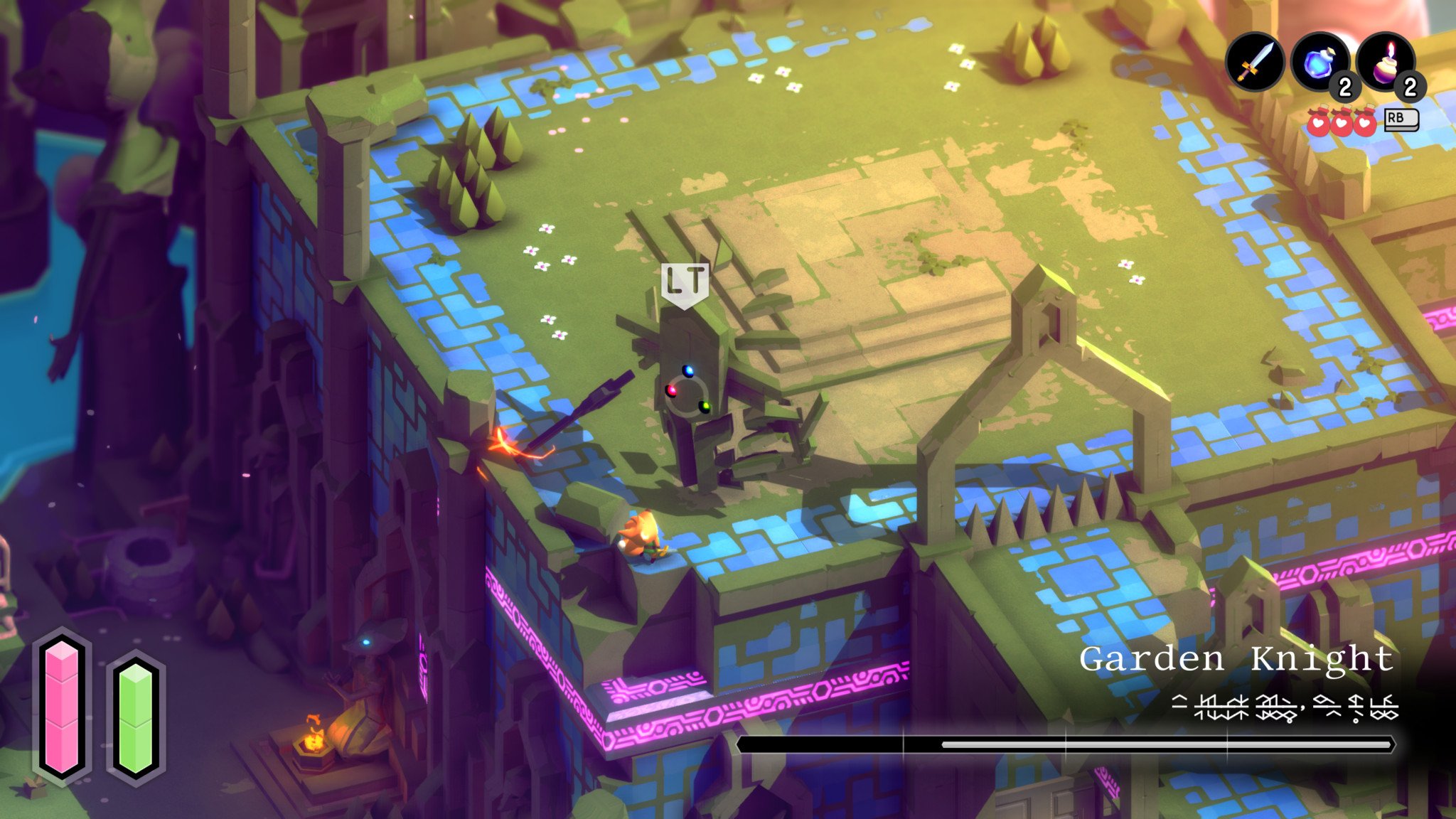
Tunic's bosses are where things take a wild turn. They're classic David vs. Goliath battles, with the tiny little fox running up to towering monsters between a barrage of attacks to get in one or two swipes with a sword before effectively dodge rolling to safely. If you found the combat in Death's Door to be to your liking, you'll probably find similar satisfaction in taking down Tunic's more troublesome baddies. These bosses mean business, and they hit like a runaway train.
However, any perceived difficulty should not be a deterrent for those looking to pick up Tunic. While there are limited accessibility options (there's no need for subtitles if there's no dialogue, after all) the options that are there can make Tunic both more accessible and more approachable.
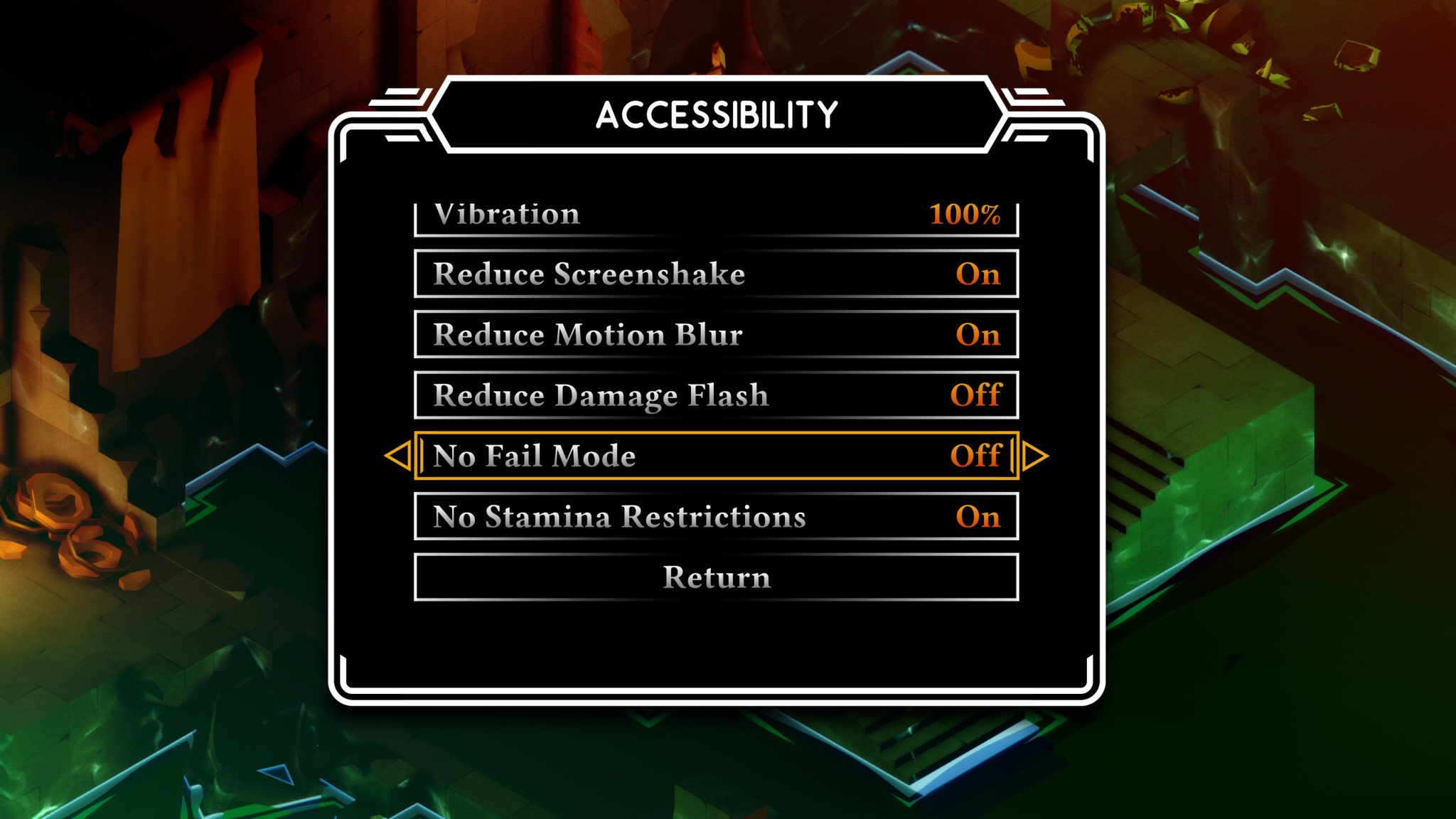
Tunic's accessibility menu features standard options like reducing controller vibration and camera shake, as well as motion blur and flashing lights from enemies. Nestled in the middle of the list are two additional options that players who want to enjoy the game's scenery and puzzle solving without the headache of combat may want to consider. No Fail Mode and No Stamina Restrictions are both simple toggle switches in the accessibility menu that can be flipped on or off at any point in the game.
This means that Tunic is still a viable option even for players who don't want to deal with the Soulslike combat of overbearing bosses and are simply content to explore the game's mysteries at their leisure. Toggling the switches does not enact any sort of punishment on a player for their choice. They can still engage with Tunic for all it has to offer, solving puzzles and taking down bosses, and just generally exploring the world and taking it all in on their own terms.
Tunic: What you won't like
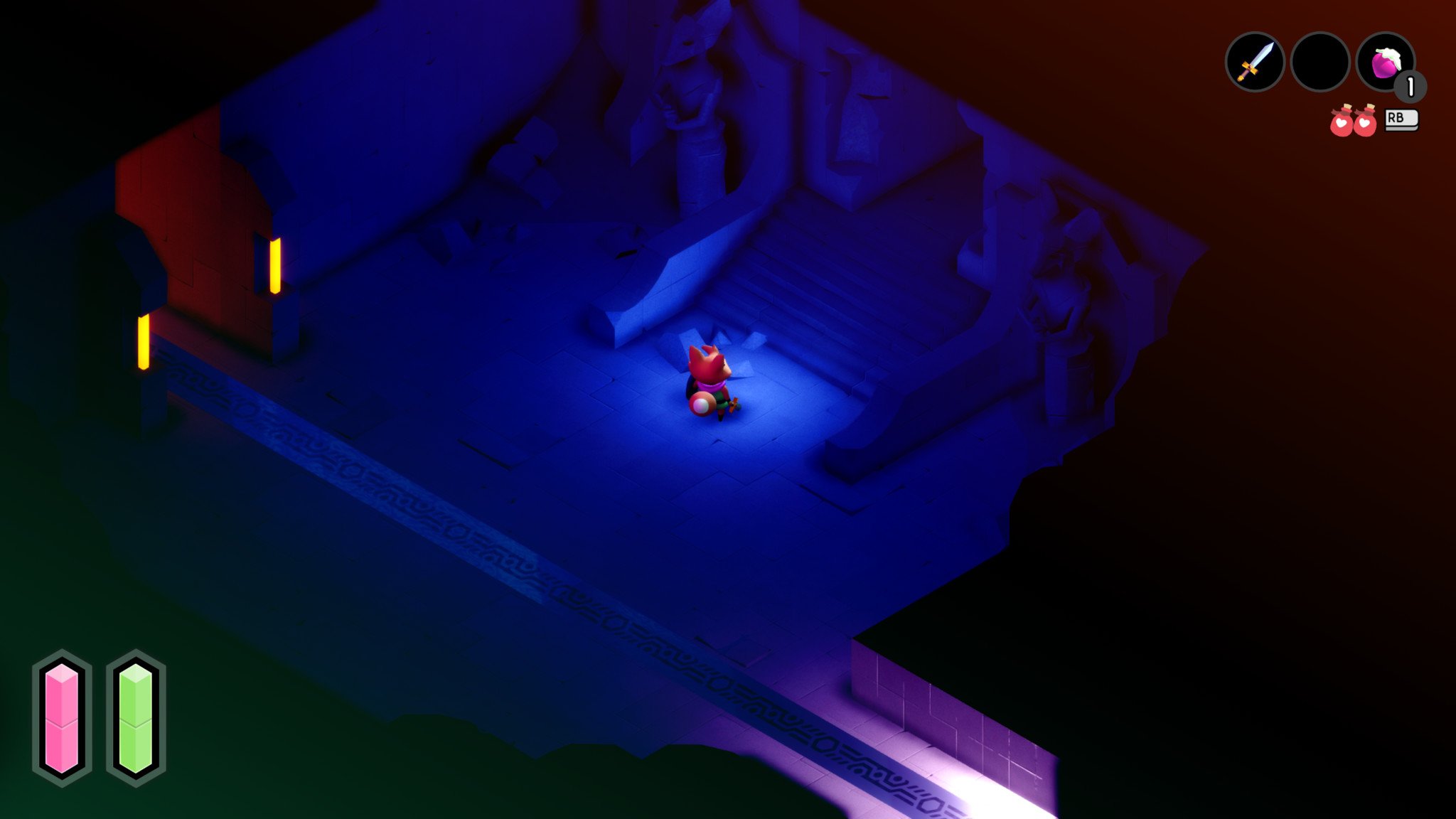
While options like No Fail Mode and No Stamina Restrictions can be incredibly helpful in making Tunic both accessible and approachable, it is still important to hammer home that this game is dead set on being explored and experienced with very little guidance. In a 2020 interview with Xbox Wire, Tunic's lone developer expressed a fondness for games that provided very little direction to players, and that fondness shows through in much of Tunic's exploratory gameplay.
Even the game's instruction manual, which is the closest to guidance players are going to get here, is torn apart into a collection of pages that have to be discovered and collected. These pages include important tips like explaining stamina and dodge rolls, as well as maps of various parts of the world and hints for solving some of the more convoluted puzzles.
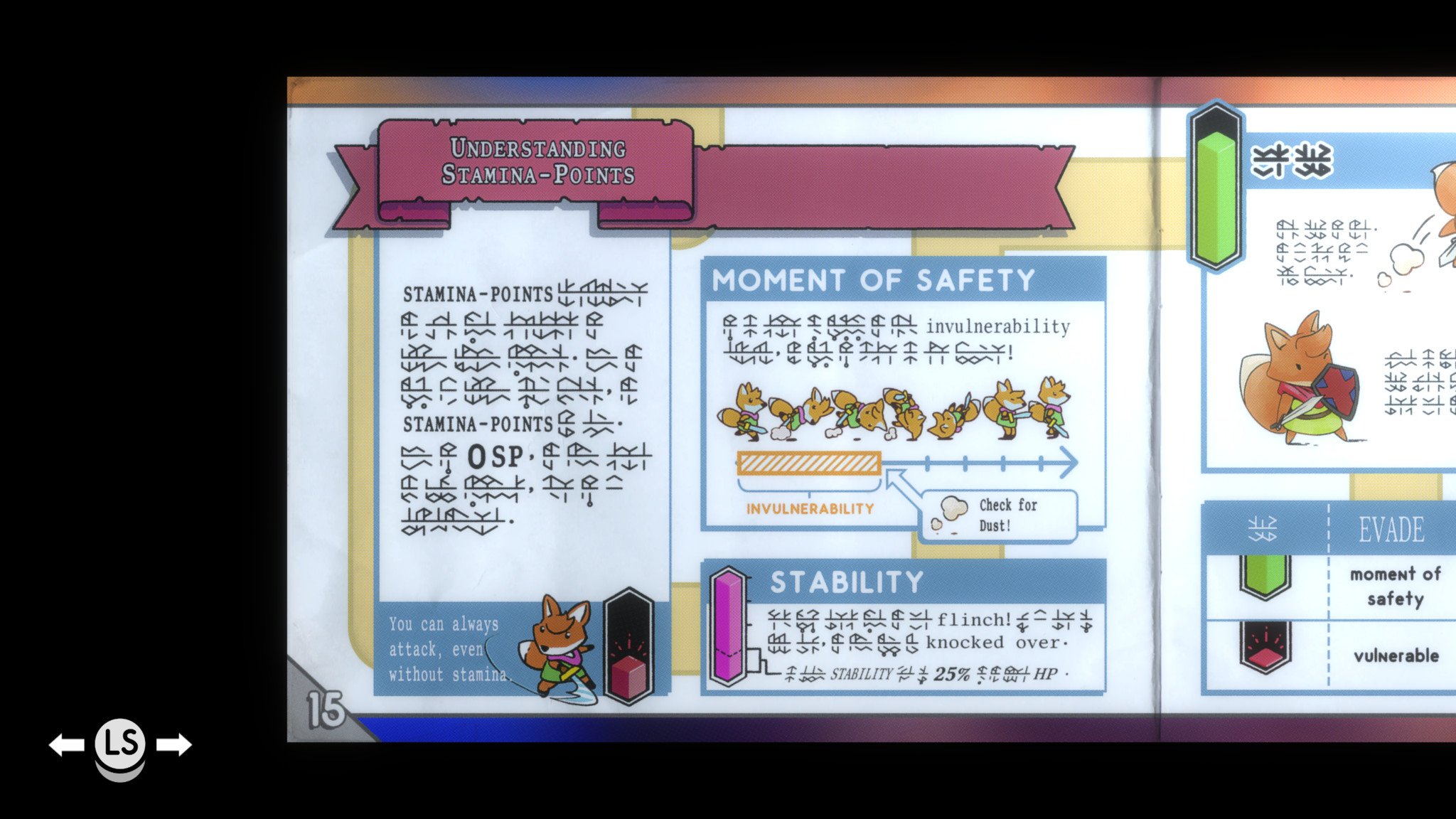
Tunic's limited HUD means there's no mini map, and the world maps are part of the instruction manual, meaning it is quite possible to explore without any navigational support whatsoever. This can often lead to dead ends where players have not sleuthed out enough puzzle clues to progress, or otherwise cause frustration when trying to revisit an area to solve a puzzle only to realize you're not quite sure where it was to begin with.
It's entirely possible to spend a lot of time just roaming around the world hoping you come across a puzzle that you can finally solve or find a door that wouldn't open before so you can have something to do. This problem extends beyond just casual navigation to puzzle tracking, as well. You'll want to keep a notepad nearby to track puzzle clues and hints discovered in the world, as the game does not store those details for you.
Tunic: Should you play it?

Tunic is an absolutely delightful game to slink away to for a few hours to explore, discover, and conquer. Solving puzzles and uncovering the myriad of hidden secrets can make for a calming adventure, but there's always the potential for an exhilarating moment of victory after a particularly difficult boss.
That said, the inclusion of accessibility settings similar to what we saw in Celeste means that Tunic can reach a wider audience of players, without alienating those who may find the repetition of continued failure at a difficult battle to be daunting or otherwise problematic. In a game that clearly draws inspiration from the likes of Bloodborne and Dark Souls with its boss battles, the move toward inclusivity is a welcome one.
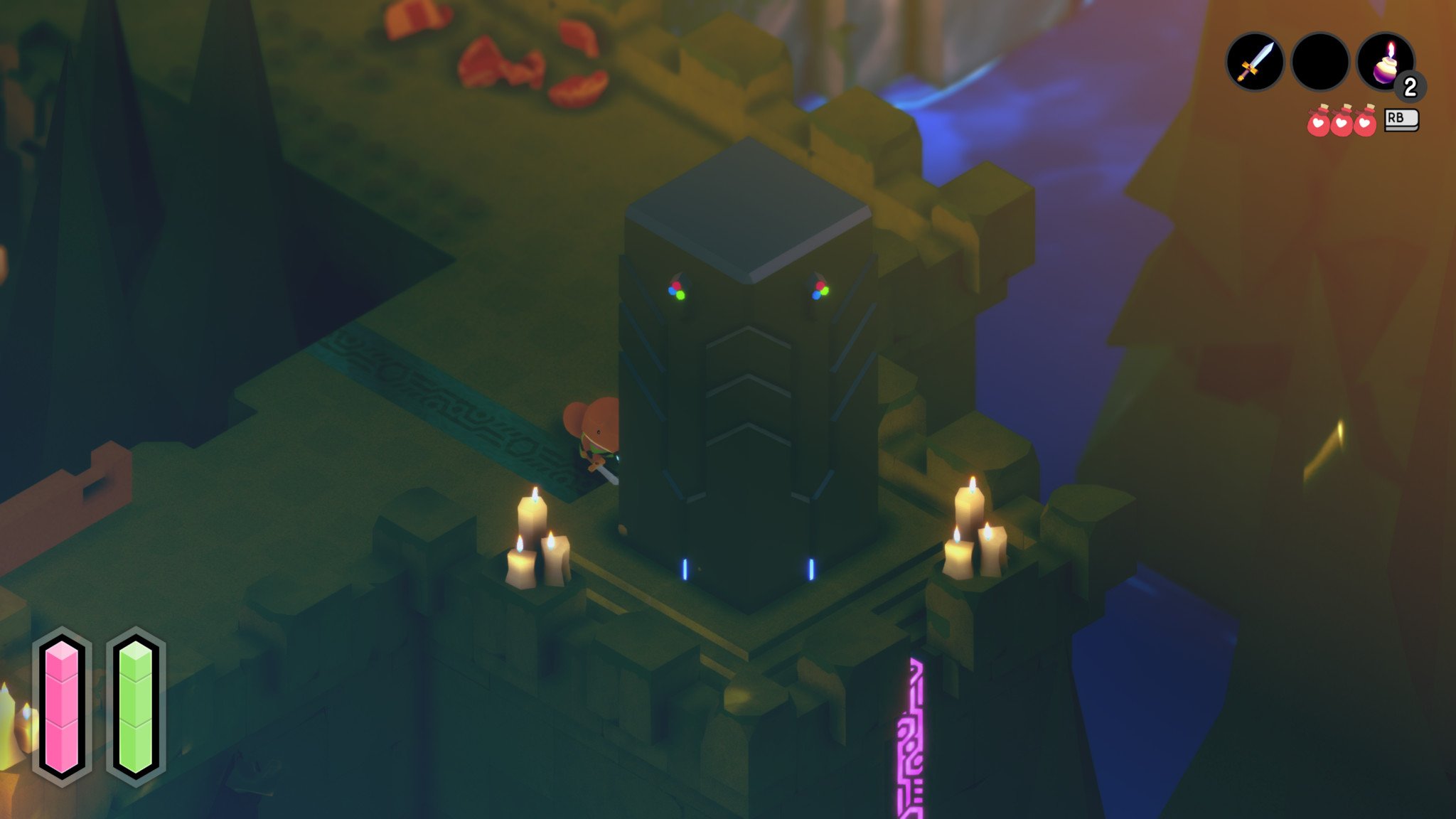
One of the biggest obstacles for Tunic, however, may be its price point. At $30, the game is considerably steeper in price than comparable games like Death's Door. Tunic also has a shorter run time, clocking in at about 12 hours for the main story and approximately 20 hours to fully uncover all of the puzzles the game has to offer. Your mileage may vary, however, depending on your puzzling skills and whether you have the assistance of others who have scoured the dungeons before you to provide you with hints.
Because Tunic was often shown alongside indie showcases of games coming to Xbox Game Pass, there was some expectation that it, too, would launch on the subscription service. Not only will Tunic will be console exclusive to Xbox at launch, but it will also be an Xbox Game Pass title.

Bottom line: It's hard to dislike an adorable fox that looks an awful lot like Link exploring an adorable world full of cryptic puzzles. The difficult bosses can be a put-off for some players, but accessibility settings like No Fail Mode help keep things approachable for a wider audience who may want to focus more on exploration and puzzles than on brutal combat.

Cole is the resident Call of Duty know-it-all and indie game enthusiast for Windows Central. She's a lifelong artist with two decades of experience in digital painting, and she will happily talk your ear off about budget pen displays.
